Merge Columns
1. Overview
1.1. Function Description
Merging columns means combining the data from two or more columns in an existing dataset into a new column. This operation is used to consolidate data so that information from different columns can be presented in the same column.
For example, merging region names (such as province, city, street) in a product order table into a complete address, or combining date information (year, month, day) into a full date. This not only makes the data cleaner but also generates new information, increasing the dimension and depth of the data.

2. Usage Guide
2.1. Operation Steps
- Drag the Merge Columns operator from the ETL operator area to the right canvas editing area;
- Click the Merge Columns operator, specify the new column name, select the original columns to merge as needed, and click Confirm;
- Optionally choose whether to delete the original columns;
- Set a separator for the new column and define how the original columns are merged;
- After configuration, preview the data result.
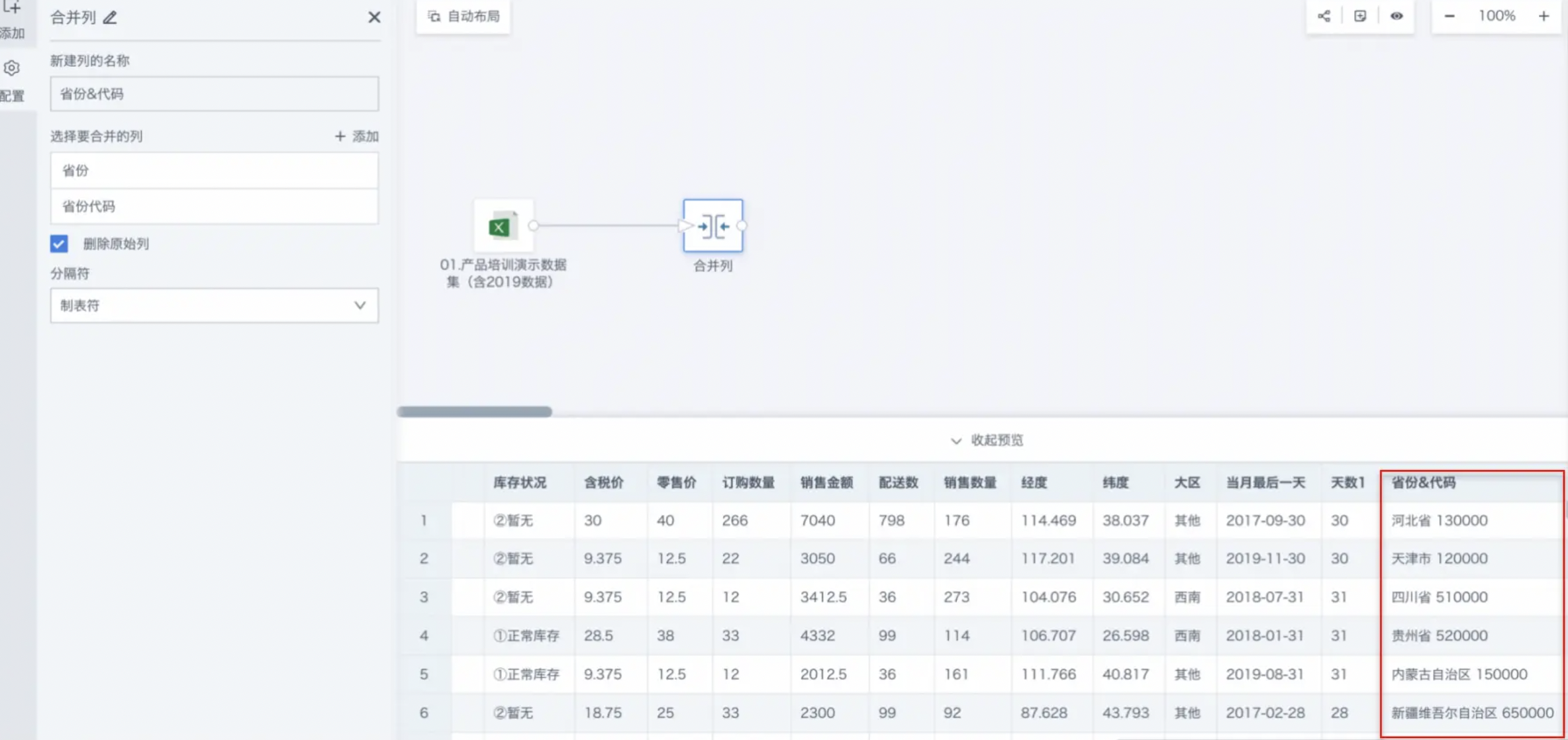
2.2. Detailed Description
Below is an example of configuring a Province & Code.
- Drag the Merge Columns operator from the ETL operator area to the right canvas editing area and connect it to the upstream node;
- Click the Merge Columns operator, the left area becomes the current operator configuration area, and rename as needed, e.g., "Province & Code";
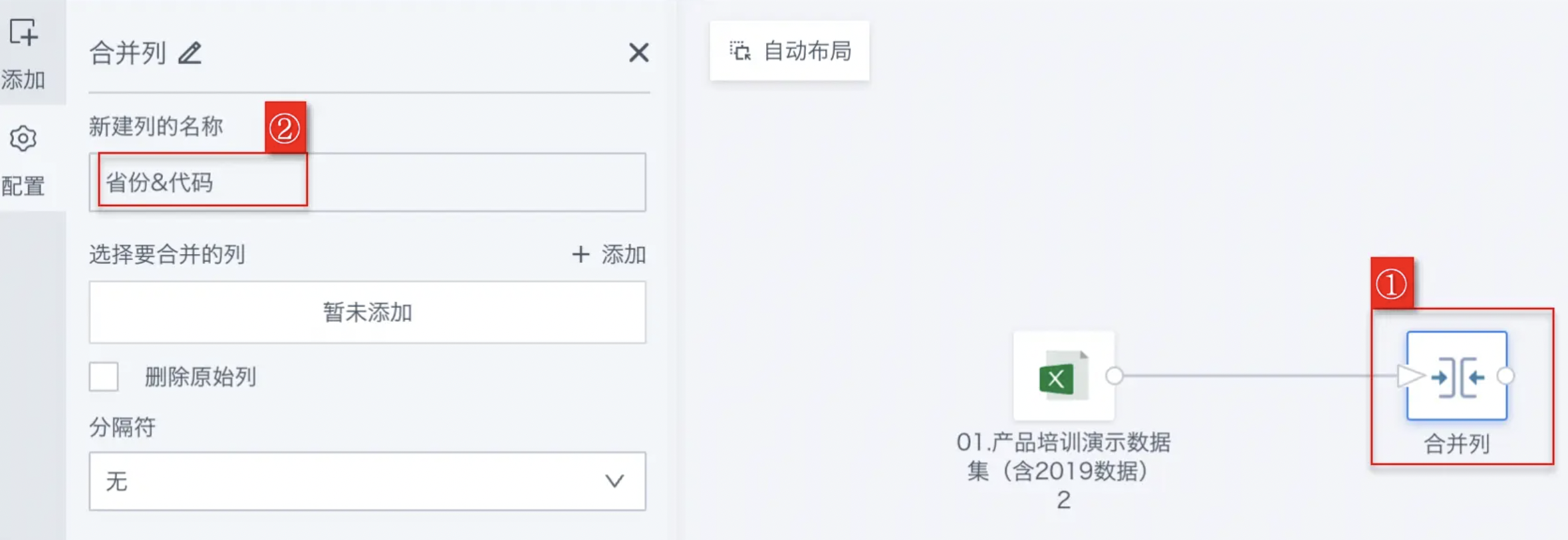
- Click the Merge Columns operator to enter its configuration interface. In the configuration interface, set the columns to merge and configure the merge method as needed;
Note: The separator can be none, semicolon, comma, tab, space, or custom.
- Merge columns: Province, Province Code
- Set a separator for the new column and define the merge method. Here, the separator is set to "tab".
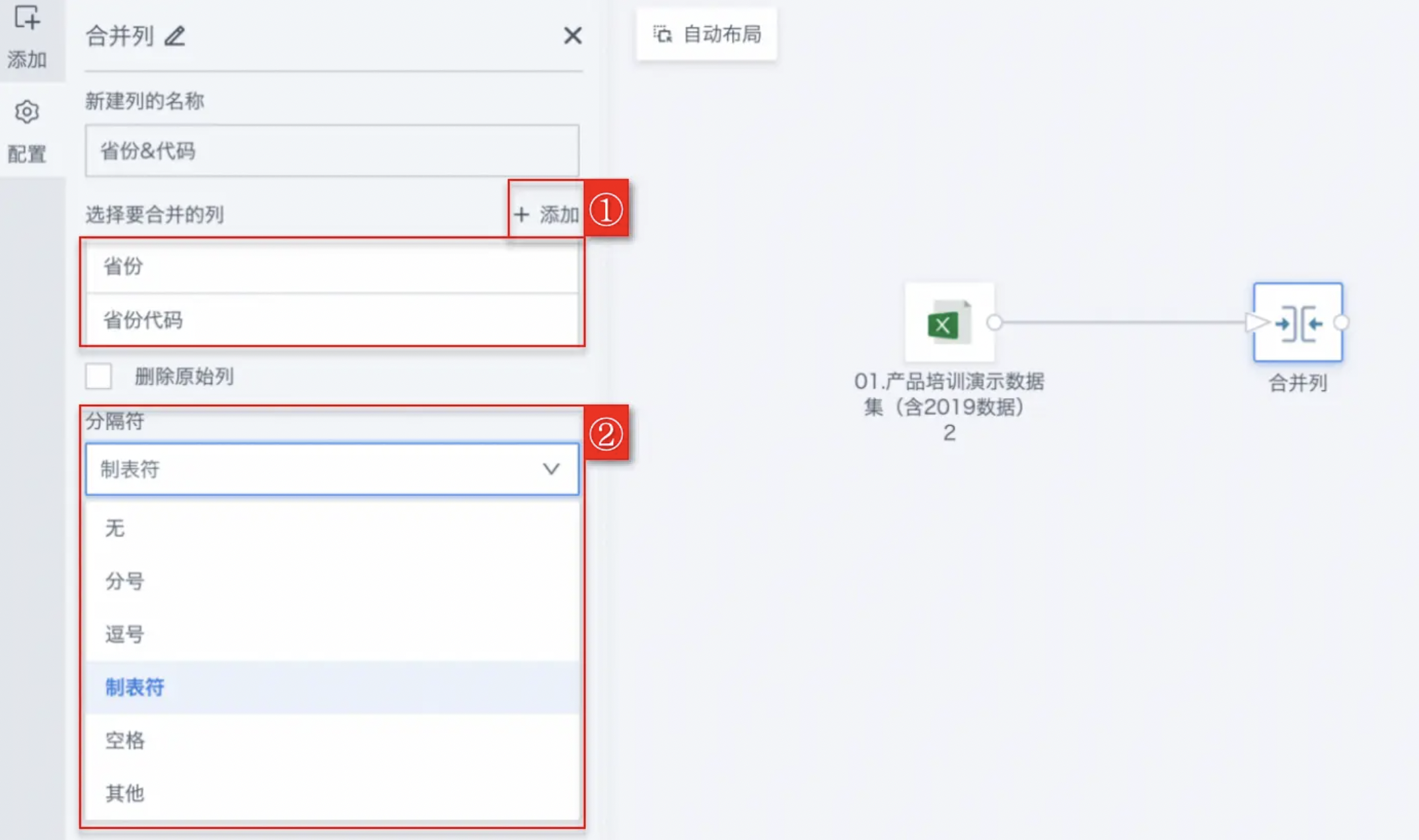
- Optionally choose whether to delete the original columns. The original columns after merging can be deleted or retained;
· Delete original columns
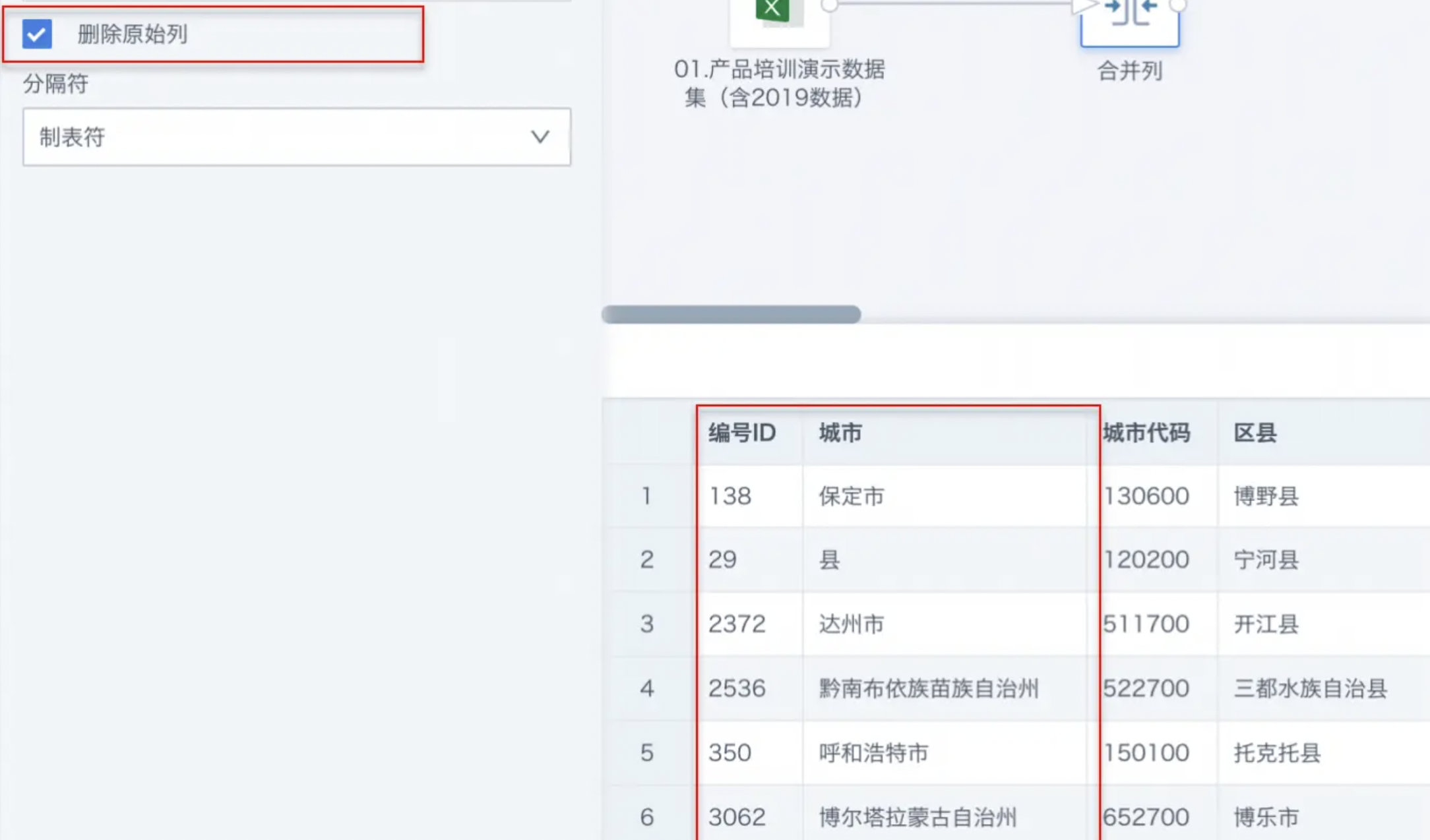
· Retain original columns
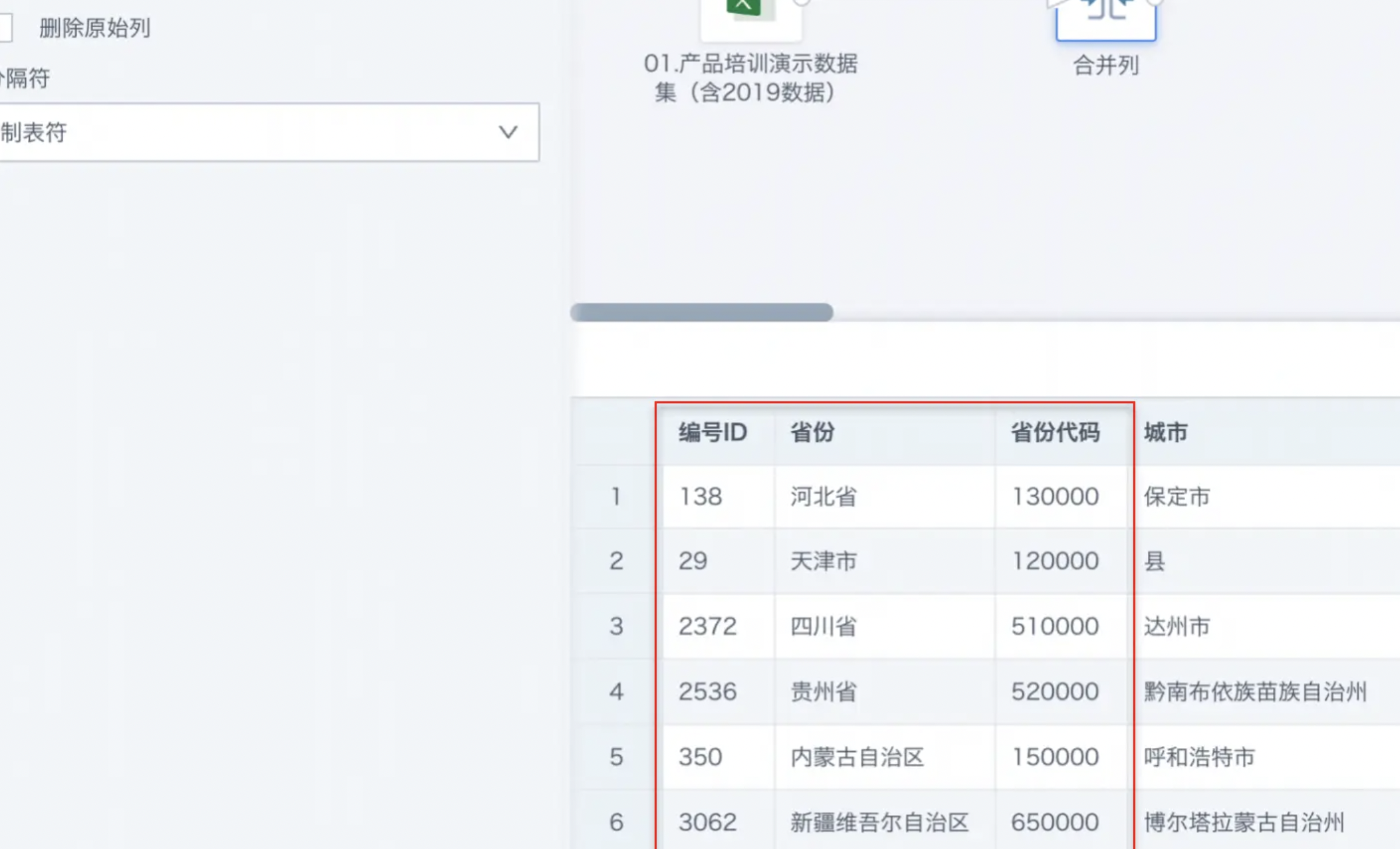
- Click Preview to preview the data result and ensure the merged column values meet expectations and contain no errors or anomalies.
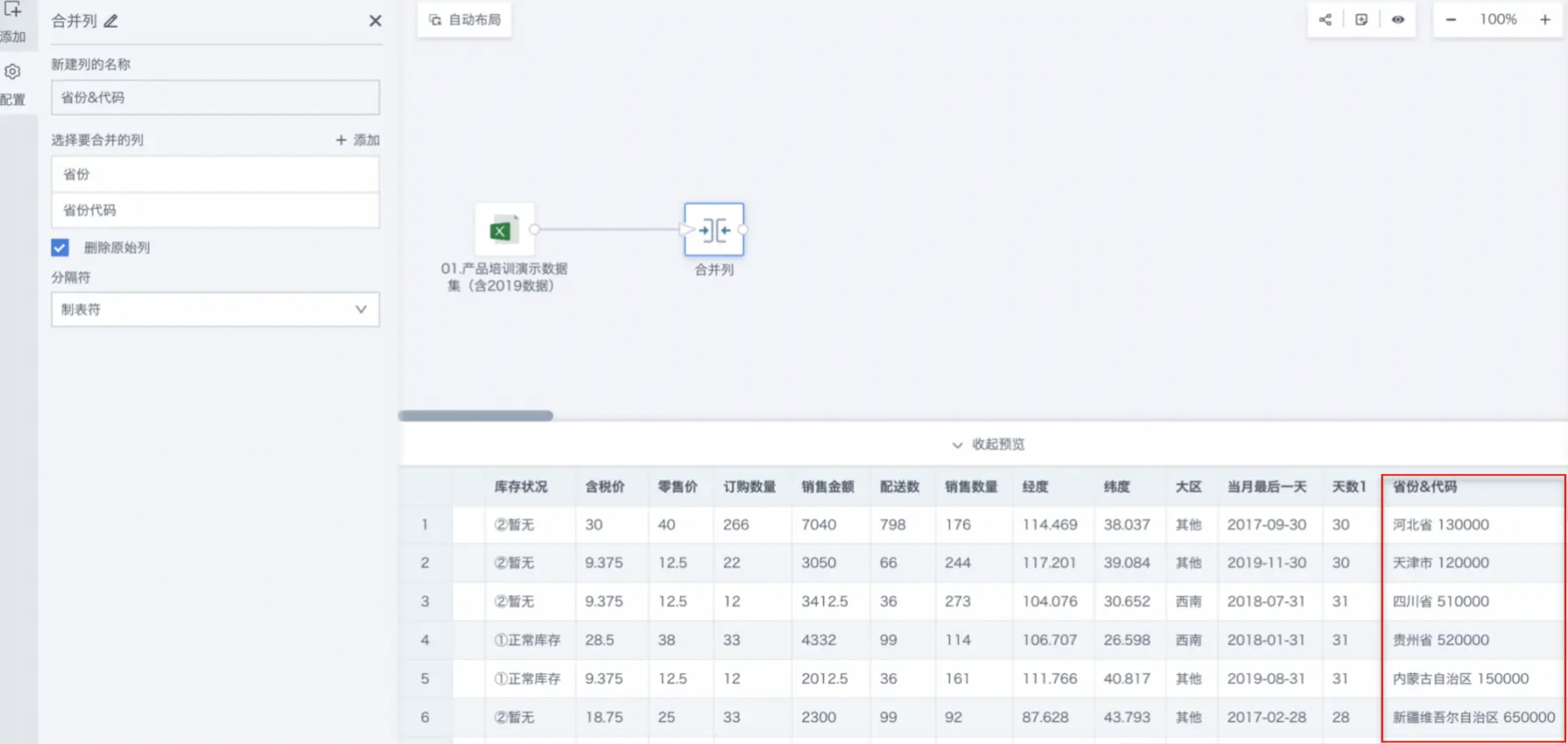
[How to split a merged field after using the Merge Columns operator on the ETL page?](../../../../11-FAQ/1-Data Processing/2-ETL FAQ.md)
For subsequent use of other data processing operators, see Getting Started.